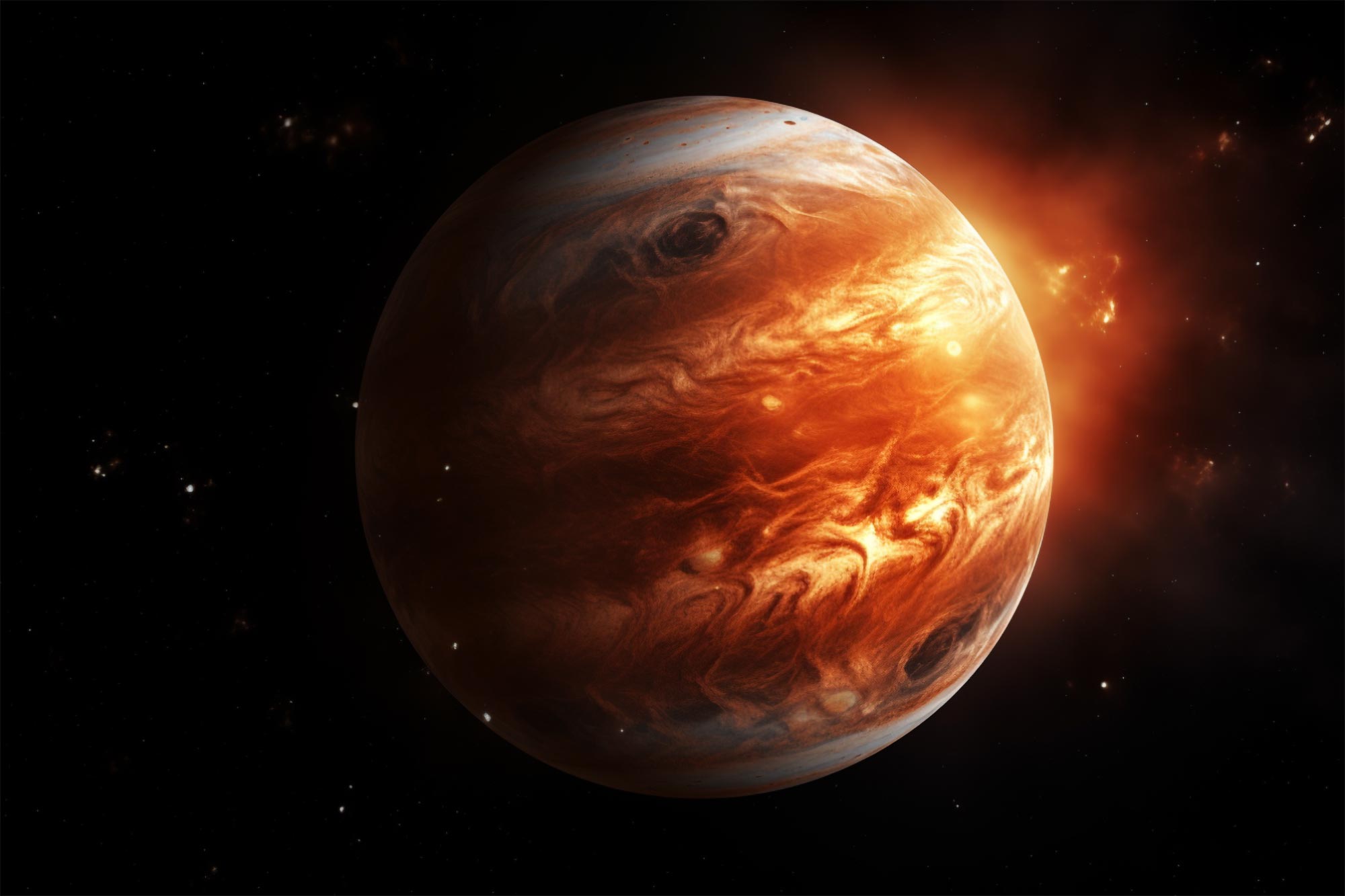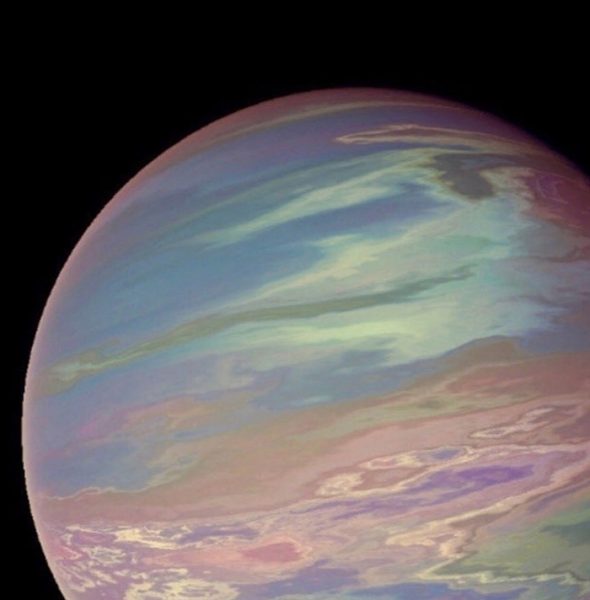
Posted on 08/21/2023 12:56:51 PM PDT by Red Badger

Astronomers have discovered a unique Jupiter-sized planet, named TOI-4860 b, orbiting a low-mass star in the Corvus constellation. This planet, enriched with heavy elements, defies traditional planet formation models. The discovery provides a chance to study the atmospheric properties of ‘Warm Jupiters’ and offers insights into the planet formation process, possibly catalyzed by an abundance of heavy elements.
Scientists have identified a Jupiter-sized planet, TOI-4860 b, around a low-mass star, challenging conventional planet formation theories.
An international team of researchers has discovered an unusual Jupiter-sized planet orbiting a low-mass star called TOI-4860, located in the Corvus constellation.
The newly discovered gas giant, named TOI-4860 b, is an unusual planet for two reasons: stars of such low mass are not expected to host planets like Jupiter, and the planet appears to be particularly enriched by heavy elements.
The study, led by University of Birmingham astronomers, was published earlier this month in a letter within the Monthly Notices of the Royal Astronomical Society.
“Under the canonical planet formation model, the less mass a star has, the less massive the disc of material is around that star. Since planets are created from that disc, high-mass planets like Jupiter, were widely expected not to form.”
— George Dransfield, PhD student at the University of Birmingham
Tools and Methods Used in the Discovery The planet was initially identified using NASA’s Transiting Exoplanet Survey Satellite as a drop of brightness while transiting in front of its host star, but that data alone was insufficient to confirm that it was a planet.
The team used the SPECULOOS South Observatory, located in the Atacama Desert in Chile, to measure the planetary signal in several wavelengths and validated the planetary nature. The astronomers also observed the planet just before and after it disappeared behind its host star, noticing that there was no change in light, meaning the planet was not emitting any. Finally, the team collaborated with a Japanese group using the Subaru Telescope in Hawai’i. Together they measured the mass of the planet to fully confirm it.
Following this star and confirming its planet was the initiative of a group of PhD students within the SPECULOOS project.
“A hint of what might have happened is hidden in the planetary properties, which appear particularly enriched in heavy elements. We have detected something similar in the host star too, so it is likely that an abundance of heavy elements catalysed the planet formation process.”
— Professor Amaury Triaud, University of Birmingham
Challenging Established Beliefs George Dransfield, one of those PhD students, who recently submitted her thesis at the University of Birmingham, explains: “Under the canonical planet formation model, the less mass a star has, the less massive is the disc of material around that star. “Since planets are created from that disc, high-mass planets like Jupiter, were widely expected not to form. However, we were curious about this and wanted to check planetary candidates to see if it was possible. TOI-4860 is our first confirmation and the lowest mass star hosting such a high mass planet.”
Insights on Planet Formation Amaury Triaud, Professor of Exoplanetology at the University of Birmingham, who led the study said: “I am ever thankful to the bright PhD students of our team for proposing to observe systems like TOI-4860. Their work has really paid off since planets like TOI-4860 are vital to deepening our understanding of planet formation.
“A hint of what might have happened is hidden in the planetary properties, which appear particularly enriched in heavy elements. We have detected something similar in the host star too, so it is likely that an abundance of heavy elements catalyzed the planet formation process.”
Characteristics and Further Studies The new gas giant takes about 1.52 days to complete a full orbit around its host star, but because its host is a cold low mass star, the planet itself can be referred to as a ‘Warm Jupiter’. This is a subclass of planet that holds particular interest for astronomers looking to build on their initial observations and learn more about how these kinds of planets are formed.
Mathilde Timmermans, another student of the SPECULOOS project, working at the University of Liege in Belgium concludes: “Thanks to its very short orbital period, and to the properties of its host star, the discovery of TOI-4860 b provides a brilliant opportunity to study the atmospheric properties of a warm Jupiter and learn more about how gas giants are formed.”
Recently the team has been awarded telescope time at the Very Large Telescope, in Chile, which they intend to use to confirm several more planets with similar properties.
Reference: “An M dwarf accompanied by a close-in giant orbiter with SPECULOOS” by Amaury H M J Triaud, Georgina Dransfield, Taiki Kagetani, Mathilde Timmermans, Norio Narita, Khalid Barkaoui, Teruyuki Hirano, Benjamin V Rackham, Mayuko Mori, Thomas Baycroft, Zouhair Benkhaldoun, Adam J Burgasser, Douglas A Caldwell, Karen A Collins, Yasmin T Davis, Laetitia Delrez, Brice-Oliver Demory, Elsa Ducrot, Akihiko Fukui, Clàudia Jano Muñoz, Emmanuël Jehin, Lionel J García, Mourad Ghachoui, Michaël Gillon, Yilen Gómez Maqueo Chew, Matthew J Hooton, Masahiro Ikoma, Kiyoe Kawauchi, Takayuki Kotani, Alan M Levine, Enric Pallé, Peter P Pedersen, Francisco J Pozuelos, Didier Queloz, Owen J Scutt, Sara Seager, Daniel Sebastian, Motohide Tamura, Samantha Thompson, Noriharu Watanabe, Julien de Wit, Joshua N Winn and Sebastián Zúñiga-Fernández, 4 August 2023, Monthly Notices of the Royal Astronomical Society: Letters. DOI: 10.1093/mnrasl/slad097
Heavy Metal Planet Ping!.....................
I read that and heard, “ Boobage” and Sammy Hagar.

Somewhere out there is a planet that has billions of tons of gold, silver, and platinum........................
Can someone please explain to me how they know that celestial bodies have light or heavy elements? What types of instruments do they use or is it a calculated math equation on a white board. I've never understood it.
I get the doppler affect that shows movement. I get the infra-red spectrum of light. I don't get this. Help.
I’m sure there is an equation to determine the mass based on it’s speed and distance from the host star...............
Astronomers forced to eat crow after discovering an unusual exoplanet in Corvus.

The plan is to land on the nearby sun to study the planet more closely, but do it at night.
Another day, another theory shot to Hades.
This is typical for a profession that needs undetectable things to make its theories work.
They could be Climatologists..................
Ah, don’cha just love settled science?
A phD student is considered an authority. The fact is that students and professors actually don’t really know how planets form. The only theory they have is the accretion disk theory. Everything starts from a swirling cloud of gas and dust that gets formed into balls that shrink until they squish down past solid and all the way to molten before cooling off at the surface. All the massive elements go down to the middle and all the light stuff ends up on the outside. After billions of years it seems very logical because you have given the matter time to sort its elements by mass. I am wondering what theory they will come up with after the precious accretion disk theory doesn’t offer a simple explanation.
I didn’t read where they ruled out planetary capture. An errant planet could have been captured by a star that could never have formed it.
Using spectroscopy you can measure the velocity oscillations of the host star and planet in the direction of the earth very very precisely. Based upon this you can determined the planets effect on the motion of the star and that gives you a measure of the relative mass. The masses of stars are generally determined from their luminosity since there is a very strong correlation between mass and luninosity for “main sequence” stars.
You can determine mass from velocity and distance but size would be difficult without knowing the density and elemental composition. Most matter in the universe is hydrogen and helium and that is most of what is out there. Something like 1 or 2 percent of the universe is anything other than hydrogen or helium and the majority of that is oxygen carbon and nitrogen. All the other elements are less abundant according to their nuclear composition with heavier elements being more and more scarce as they increase in mass. There is also a tendency towards elements with an even number of protons.
The Theory is already getting ‘silent holes’ - most solar systems are not like ours - the larger planets orbit close to their star, while ours orbit a long way out. Ours fits the accretion disc theory, everyone else does not.
Not to mention that you can determine the orbital periodicity by watching the red shift and blue shift over time.
Exactly. Watching the spectroscopy shits is how you determine the red shift/blue shift.
Disclaimer: Opinions posted on Free Republic are those of the individual posters and do not necessarily represent the opinion of Free Republic or its management. All materials posted herein are protected by copyright law and the exemption for fair use of copyrighted works.